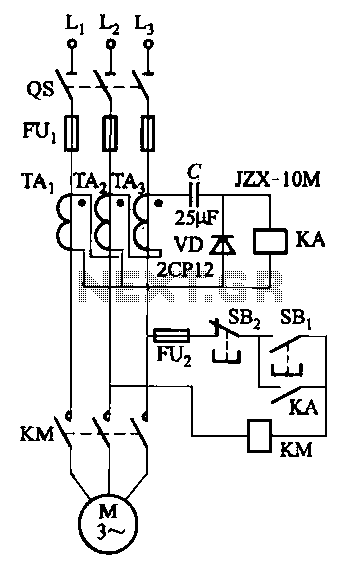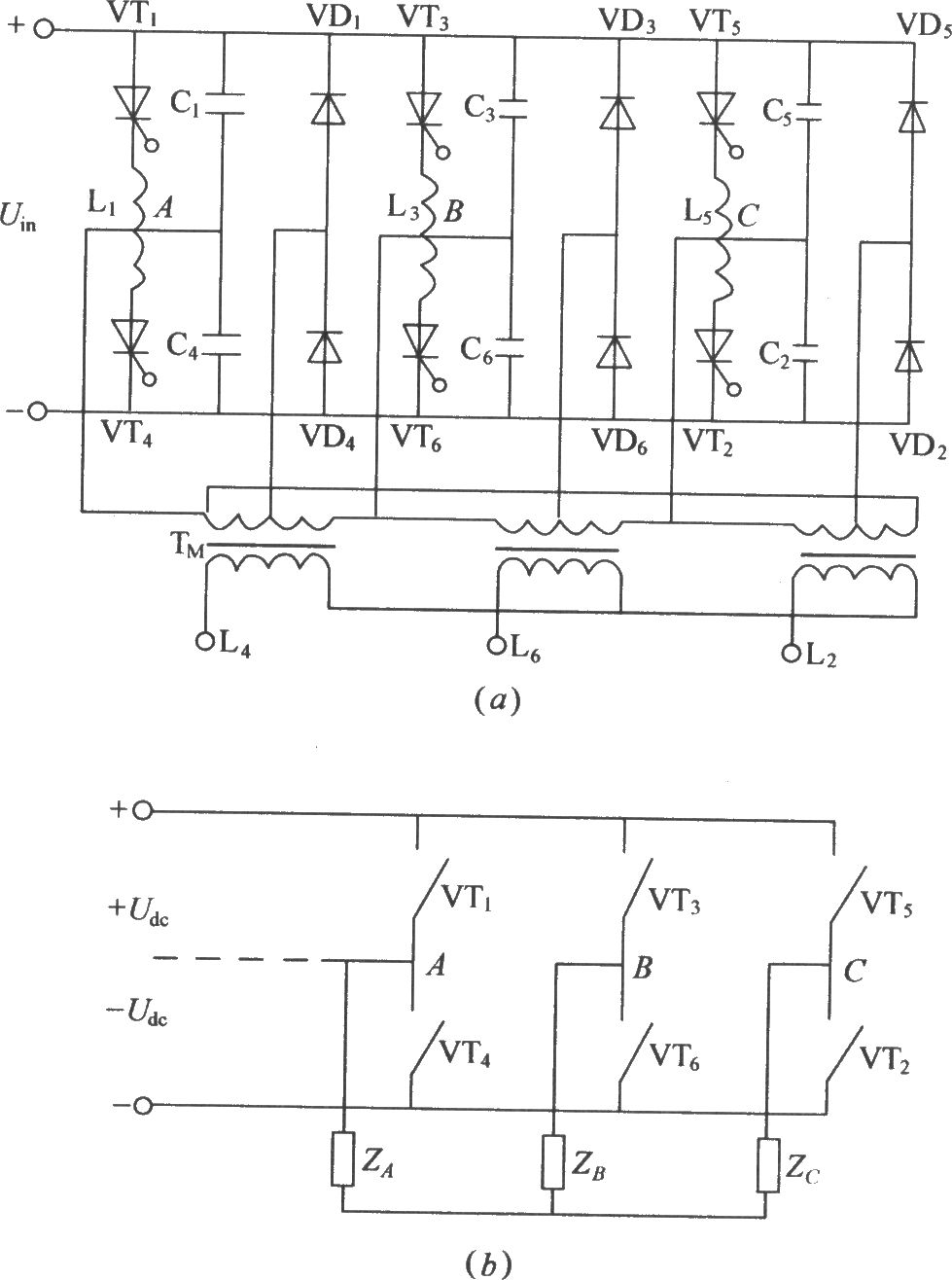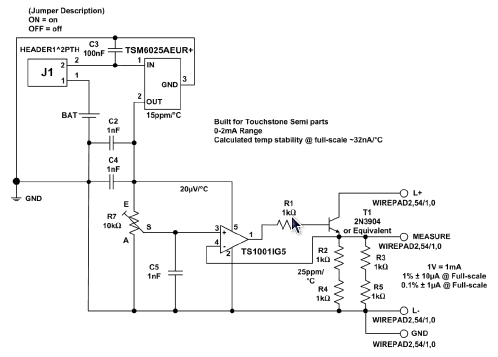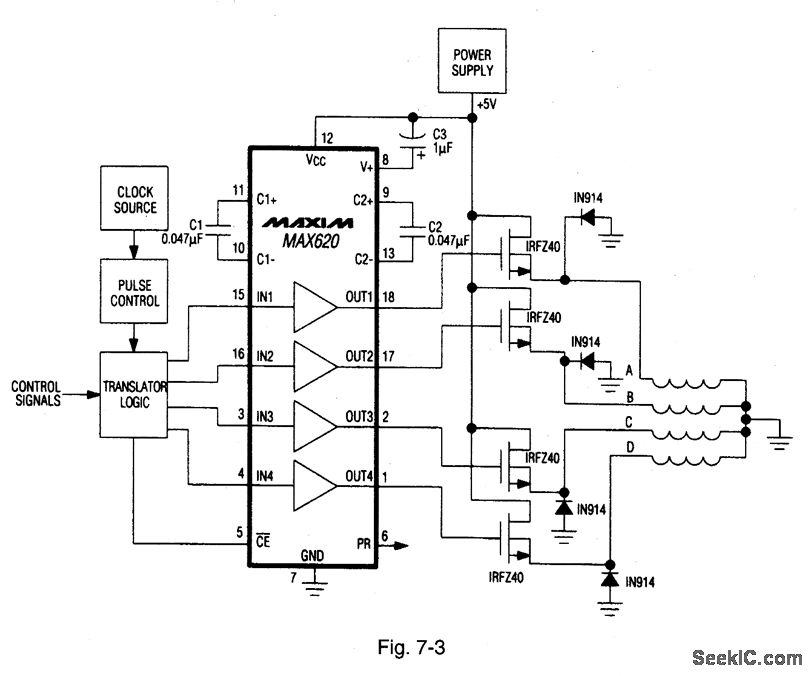
A third harmonic current phase protection circuits

Figure 4-27 (b) line demonstrates a configuration that enhances the output current waveform DC voltage compared to the line in Figure 4-27 (a). This configuration can be utilized for motors with larger capacities.
The circuit illustrated in Figure 4-27 (b) incorporates a capacitor designed to improve the output current waveform of a DC voltage supply. By integrating this capacitor, the circuit effectively smooths out voltage fluctuations, resulting in a more stable and higher-quality DC output. This is particularly beneficial for applications involving larger capacity motors, which typically require a consistent power supply to operate efficiently.
The capacitor's role in this configuration is to store energy and release it as needed, thereby reducing ripple voltage and enhancing the overall performance of the motor. The selection of the capacitor's value is critical; it must be appropriately sized to match the load requirements of the motor. A larger capacitance will improve energy storage and discharge capabilities, leading to a more robust output current waveform.
In addition to the capacitor, other components such as inductors or additional filtering elements may be integrated into the circuit to further refine the output characteristics. Proper layout and design considerations, including the placement of components and the use of appropriate PCB techniques, are essential to minimize parasitic effects and ensure optimal performance.
Overall, the configuration presented in Figure 4-27 (b) is an effective solution for enhancing the performance of DC voltage supplies used in high-capacity motor applications, resulting in improved efficiency and reliability.Figure 4-27 (b) line than in Figure 4-27 (a) line more than a capacitor, to improve and increase the output current waveform DC voltage. Figure 4-27 (b) line shown can be used for larger capacity motor.
The circuit illustrated in Figure 4-27 (b) incorporates a capacitor designed to improve the output current waveform of a DC voltage supply. By integrating this capacitor, the circuit effectively smooths out voltage fluctuations, resulting in a more stable and higher-quality DC output. This is particularly beneficial for applications involving larger capacity motors, which typically require a consistent power supply to operate efficiently.
The capacitor's role in this configuration is to store energy and release it as needed, thereby reducing ripple voltage and enhancing the overall performance of the motor. The selection of the capacitor's value is critical; it must be appropriately sized to match the load requirements of the motor. A larger capacitance will improve energy storage and discharge capabilities, leading to a more robust output current waveform.
In addition to the capacitor, other components such as inductors or additional filtering elements may be integrated into the circuit to further refine the output characteristics. Proper layout and design considerations, including the placement of components and the use of appropriate PCB techniques, are essential to minimize parasitic effects and ensure optimal performance.
Overall, the configuration presented in Figure 4-27 (b) is an effective solution for enhancing the performance of DC voltage supplies used in high-capacity motor applications, resulting in improved efficiency and reliability.Figure 4-27 (b) line than in Figure 4-27 (a) line more than a capacitor, to improve and increase the output current waveform DC voltage. Figure 4-27 (b) line shown can be used for larger capacity motor.
Warning: include(partials/cookie-banner.php): Failed to open stream: Permission denied in /var/www/html/nextgr/view-circuit.php on line 713
Warning: include(): Failed opening 'partials/cookie-banner.php' for inclusion (include_path='.:/usr/share/php') in /var/www/html/nextgr/view-circuit.php on line 713





